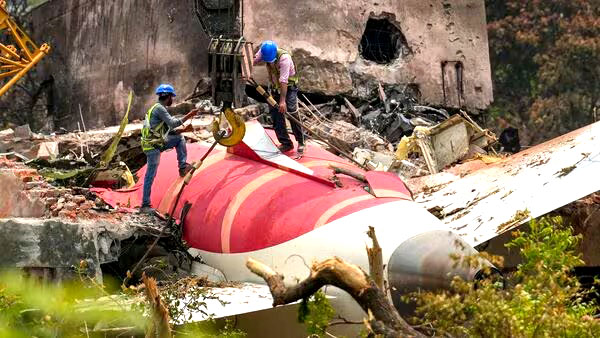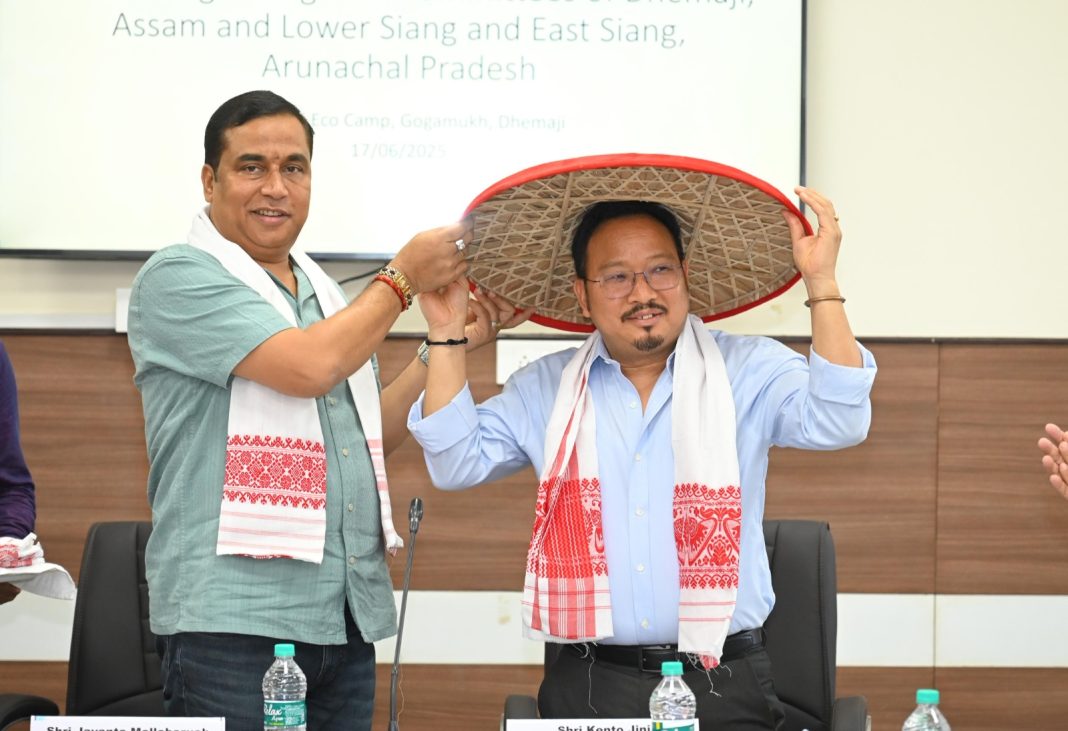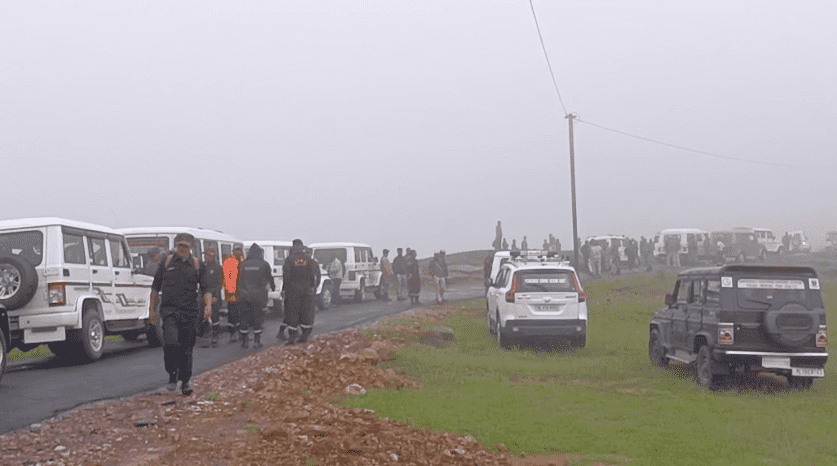By Dipak Kurmi
When Air India Flight 171 plunged from the skies over Ahmedabad on Thursday, claiming the lives of all 241 passengers and crew on board, the immediate response unfolded with grim predictability. Emergency services scrambled to the crash site. Heartbroken families gathered at airports, desperate for information. News media encamped outside terminals, beaming images of wreckage and anguish to television screens across the country. But by Sunday, a development less visible to the grieving public—and perhaps puzzling to many—was quietly taking place. Teams from international aviation bodies began arriving in Ahmedabad to join the investigation into the catastrophic crash.
Among the foreign experts who landed were officials from the United States’ National Transportation Safety Board (NTSB), the Federal Aviation Administration (FAA), and the United Kingdom’s Civil Aviation Authority (CAA). The question naturally arises: why are agencies from the United States and the United Kingdom, neither of which operated the flight or hosted the airline, involved in investigating a disaster that occurred on Indian soil?
The answer lies not in diplomatic courtesy or informal cooperation, but in a binding international framework known as the Chicago Convention—a global agreement that has quietly governed the complex world of civil aviation since 1944.
The Chicago Convention: A Global Compact for Aviation Safety
Signed in the waning months of World War II, the Convention on International Civil Aviation—commonly referred to as the Chicago Convention—was born of a shared vision among its framers: that aviation would become a critical conduit for global connectivity, and that its safety would require robust, collective oversight. Today, 193 countries, including India, the United States, and the United Kingdom, are signatories to this treaty. The convention established the International Civil Aviation Organization (ICAO), a United Nations agency based in Montreal, which oversees technical standards and operational rules governing global air travel.
Among its numerous annexes, Annex 13 is of particular relevance to tragedies like AI 171. Annex 13 sets out the international protocols for investigating aircraft accidents and serious incidents. Crucially, its stated objective is not to assign legal blame or liability but to promote aviation safety by uncovering root causes, learning from errors, and preventing future mishaps.
Annex 13 and the Role of Involved States
According to Chapter 5 of Annex 13, the primary responsibility for investigating an aircraft accident rests with the ‘State of Occurrence’—the nation where the incident took place. In the case of Air India Flight 171, which crashed in Ahmedabad, that responsibility falls squarely on India. Accordingly, the investigation is being led by the Aircraft Accident Investigation Bureau (AAIB), India’s official body under the Ministry of Civil Aviation that is mandated to probe all civil aviation accidents and serious incidents.
But the protocol goes further. It extends participation rights to other countries that have a formal connection to the aircraft in question. These include the ‘State of Registry’, where the aircraft is registered; the ‘State of the Operator’, which operated the aircraft; the ‘State of Design’, where the aircraft was conceptualised; and the ‘State of Manufacture’, where it was built.
In the case of Flight 171, India is both the State of Registry and the State of the Operator, since the aircraft bore Indian registration (notably beginning with the prefix ‘VT’) and was operated by Air India, India’s national carrier. However, the State of Design and State of Manufacture are both the United States, because the aircraft was built by Boeing, and its engines manufactured by General Electric, two American aerospace giants. This makes the participation of the NTSB and FAA not just appropriate, but formally required under Annex 13.
Moreover, the United Kingdom’s involvement is justified by yet another dimension of the protocol. Though not directly connected to the aircraft’s operation or design, 53 British nationals were among the dead. ICAO allows the state of nationality of passengers, especially when fatalities are involved, to join the investigation in a limited capacity. Thus, the UK’s Civil Aviation Authority is participating with the intent of ensuring transparency and justice for the bereaved British families.
Not an Intrusion, But a Necessity
This multinational investigative presence is not a violation of India’s sovereignty, nor is it an example of foreign overreach. It is, rather, a practical necessity born of the deeply interconnected nature of modern aviation. Aircraft today are designed in Seattle, assembled in Chicago, fitted with parts from Germany or Japan, and flown by airlines from Dubai to Delhi. A single aircraft type, like the Boeing 737 or Airbus A320, might be operated by dozens of airlines spanning six continents. In such a world, isolating crash investigations within national borders would be counterproductive and, frankly, dangerous.
Take, for instance, the global grounding of the Boeing 737 MAX in 2019, after two catastrophic crashes in Indonesia and Ethiopia. The investigations that followed involved experts from numerous countries, revealing a software flaw in the aircraft’s MCAS system that was critical to understanding the problem and implementing corrective measures. The lessons learned in Jakarta and Addis Ababa quite literally helped safeguard air travel in every part of the world. It is this principle of shared learning that underpins the international participation in the Air India Flight 171 investigation.
Indeed, this is not the first time India has activated such protocols. After the crash of Air India Express Flight 812 in Mangalore in 2010, which killed 158 people, India sought and received technical assistance from the NTSB in decoding the aircraft’s Flight Data Recorder and Cockpit Voice Recorder. The precedent is well established and respected, both domestically and internationally.
The Investigation Process and the Path Ahead
The investigative process governed by ICAO rules is both technical and collaborative. All participating states and manufacturers are allowed to visit the crash site, inspect the wreckage, review maintenance records, interview crew and air traffic controllers, and submit technical inputs. They may also recommend safety advisories and are entitled to receive copies of the final report.
While India’s AAIB retains final authority, the presence of global experts helps ensure that findings are rigorous, unbiased, and comprehensive. Often, the manufacturers themselves—such as Boeing in this case—send their own engineers as part of the accredited team working with the NTSB. While this may raise concerns about conflicts of interest, ICAO protocols enforce transparency, and all evidence and conclusions are subject to independent verification.
A Global System for Global Challenges
In an era where aviation technology advances faster than regulatory regimes can catch up, and where one flawed bolt or software line can have continent-spanning consequences, no country can afford to investigate in isolation. International participation isn’t just a legal formality under Annex 13—it is a strategic imperative. The inclusion of US and UK agencies in the AI 171 crash probe reflects a matured, rules-based international order in aviation safety—an order India has long supported and benefited from.
To the grieving families of those who perished on Flight 171, this may offer little immediate solace. But it ensures that every data point, every piece of wreckage, and every technical anomaly is examined with the utmost scrutiny—by the world’s most experienced aviation experts. In doing so, the tragedy in Ahmedabad might help prevent a future disaster somewhere else.
Air crashes, devastating as they are, become turning points in the evolution of flight safety. If the global aviation system is to be trusted, its responses to such tragedies must be collaborative, transparent, and above all, humane. That is what the Chicago Convention envisioned. And that is what is now unfolding in India.
(the writer can be reached at dipakkurmiglpltd@gmail.com)




